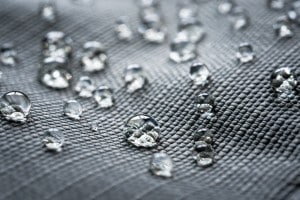Battling Moisture: Preventing Downtime and Extending Your Compressed Air Equipment’s Life
 For industries using compressed air systems, moisture is an enemy. Before air dryers were implemented, accumulated moisture created costly problems throughout the entire operation. The rusting or corrosion of a system often led to malfunctioning of pneumatic controls, incorrect readings and advanced wear and tear of moving pneumatic parts.
For industries using compressed air systems, moisture is an enemy. Before air dryers were implemented, accumulated moisture created costly problems throughout the entire operation. The rusting or corrosion of a system often led to malfunctioning of pneumatic controls, incorrect readings and advanced wear and tear of moving pneumatic parts.
The uncontrolled spurts of oily condensate would ruin work in progress, just one drop would cause a spray painting job to be sanded back and repainted
Moisture is naturally present in the air as humidity. Consequently, with a system that gathers and compresses air, moisture accumulation is inevitable. A typical system will operate at 8 bar, that is 8 volumes of ambient humidity air compressed into one volume. The water is incompressible so the air become oversaturated and as it cools more and more water condenses from vapour into droplets.
Probably every Service Technician could tell stories of receivers half full or more of stagnant condensate. This causes the compressor to constantly cycle on and off creating higher energy costs and accelerated wear.
Luckily today, there are now technologies that remove water from compressed air systems. Despite widespread use of automatic drains, operators and plant managers should still be vigilant about water accumulation in the receiver to ensure optimal system efficiency.
So, to help our readers prevent downtime and extend their industrial compressor’s life, we’ll share with you the most effective ways to eliminate moisture.
Housekeeping is Still Key
Like with any system, proper housekeeping is the primary key to keeping machines operational. For compressed air equipment, the primary and simplest method of keeping moisture out of your lines is to drain the compressor receiver frequently. In a manual drain operation, draining has to be done every day you operate the compressor. For plants where the drain valve is difficult to reach, a drain extension kit or an automatic receiver drain or a timer operated drain are recommended.
The inside surface of receivers is very rarely coated (for a reason in another blog) so scale and rust particles can block even the autodrain.
Filter Out the Moisture
There are many filters needed for industrial compressors, but one of the most important moisture filtering and purification component in a compressor is the coalescing filter. They do not remove water vapour from the system, but they eliminate water droplets, oil and solid particles as small as 0.01 °m. For optimal mechanical filtration, filters can be installed in pairs. The first filter, a general-purpose one, strains the bulk of the contaminants. The second filter, a high-efficiency one can prevent the remaining particles from going further in the compression line.
Strip the Air of any Left Water
Cooling the air with a refrigerated dryer strips the air of its capability to hold water. The colder the air, the less water it can hold. The refrigerated dryer acts like a refrigerator, cooling the air to 1.5˚C to 10˚C, resulting in a pressure dew point of 0.5˚C to 3.8˚C. With the help of gravity, water then drops out of the air.
To make the air very dry, desiccant air dryers can be used. The dryer can take down the dew point to -40°C. This is very important for applications such as spray painting, printing and bulk material conveying.
After this stage, the compressed air would normally pass through a final filter, or for food and beverage industry, a carbon filter before its intended use.
Moisture in compressed air systems can cause expensive damage to your equipment, production line and finished products. To successfully combat moisture, a whole system involving filters, dryers and proper housekeeping is recommended.
If you need help on selecting and sizing the best combinations of dryers or filters, we’d be glad to help. With over 20 years of experience, we can advise you on the best products for your needs.
Need to go moisture-free? Contact Air Energy today.